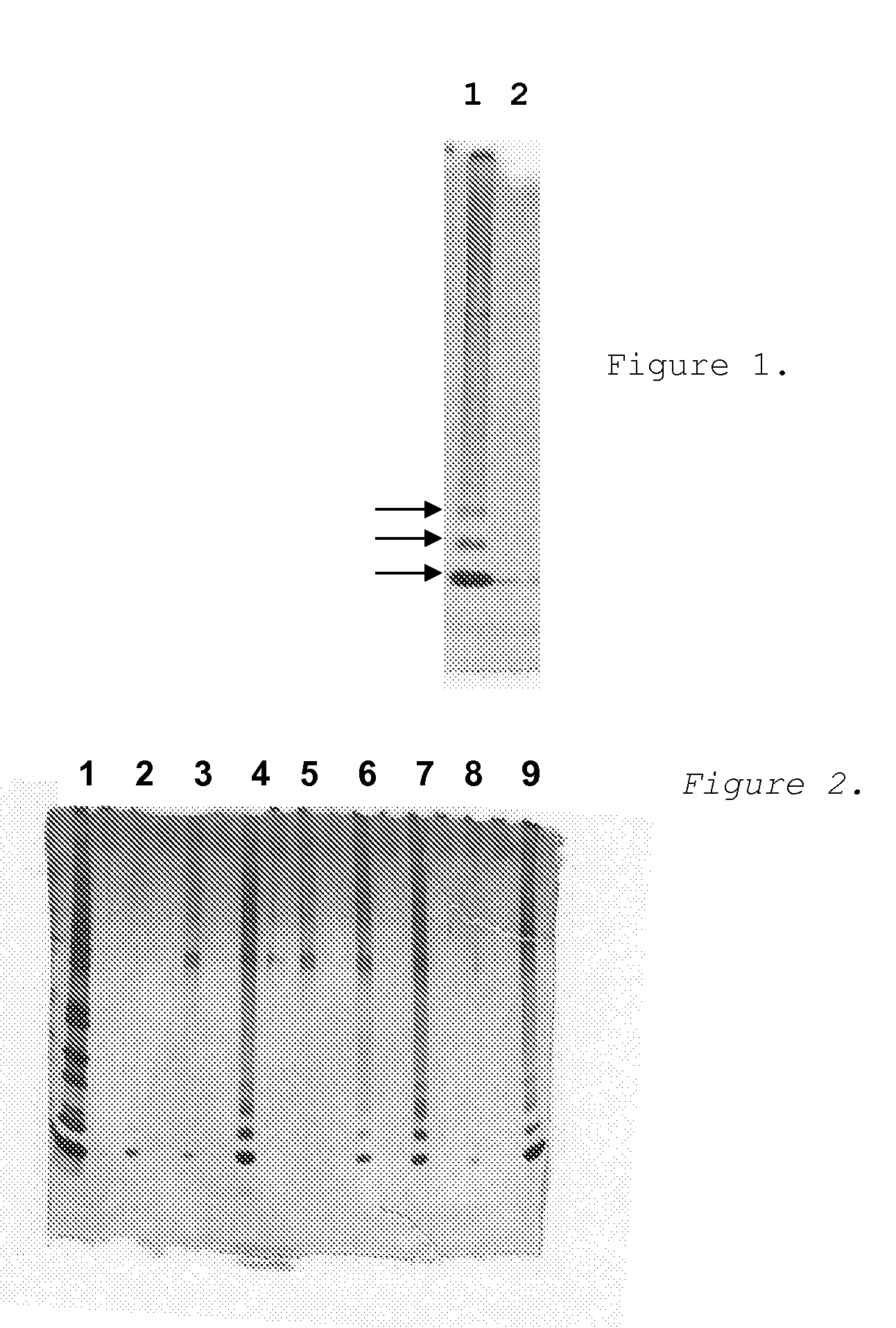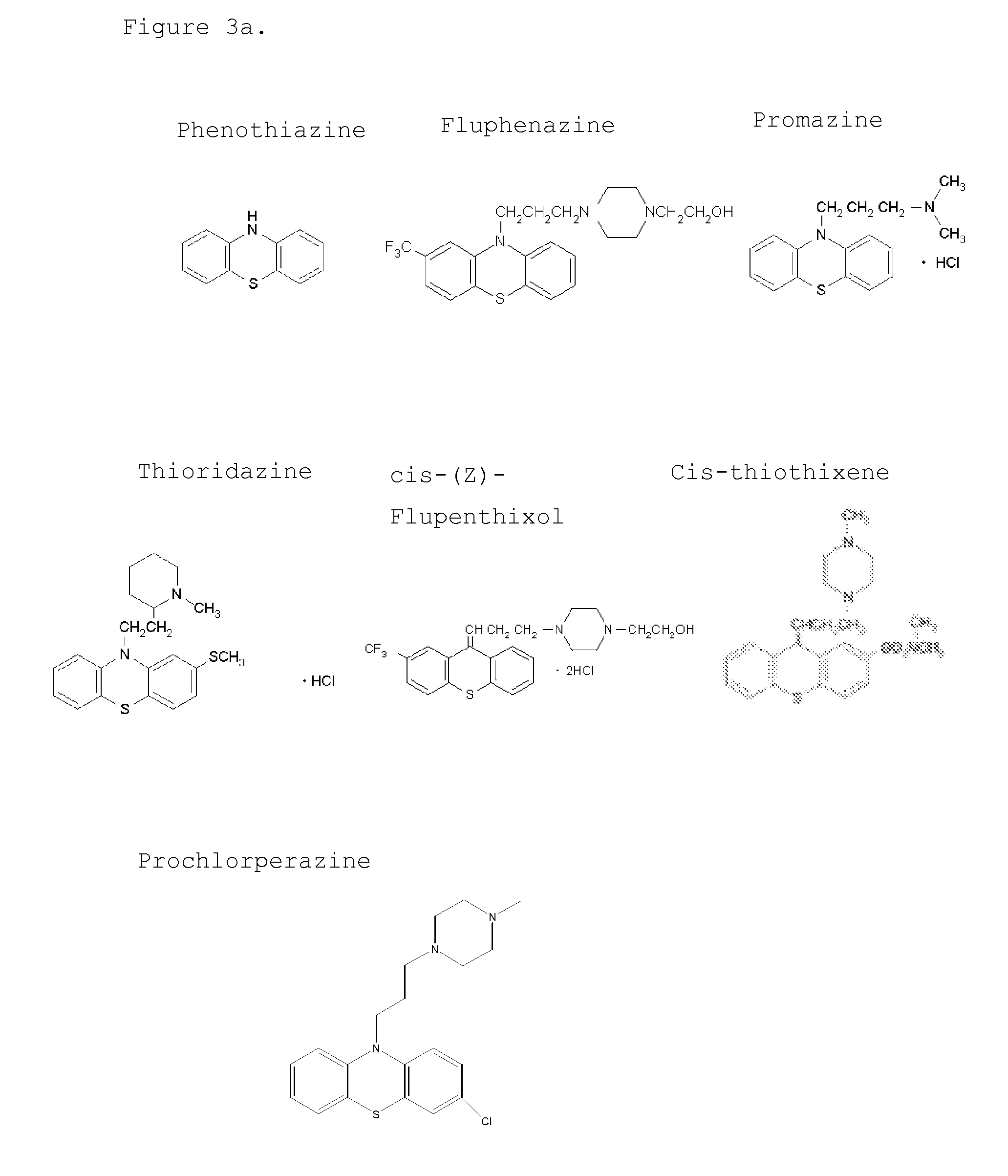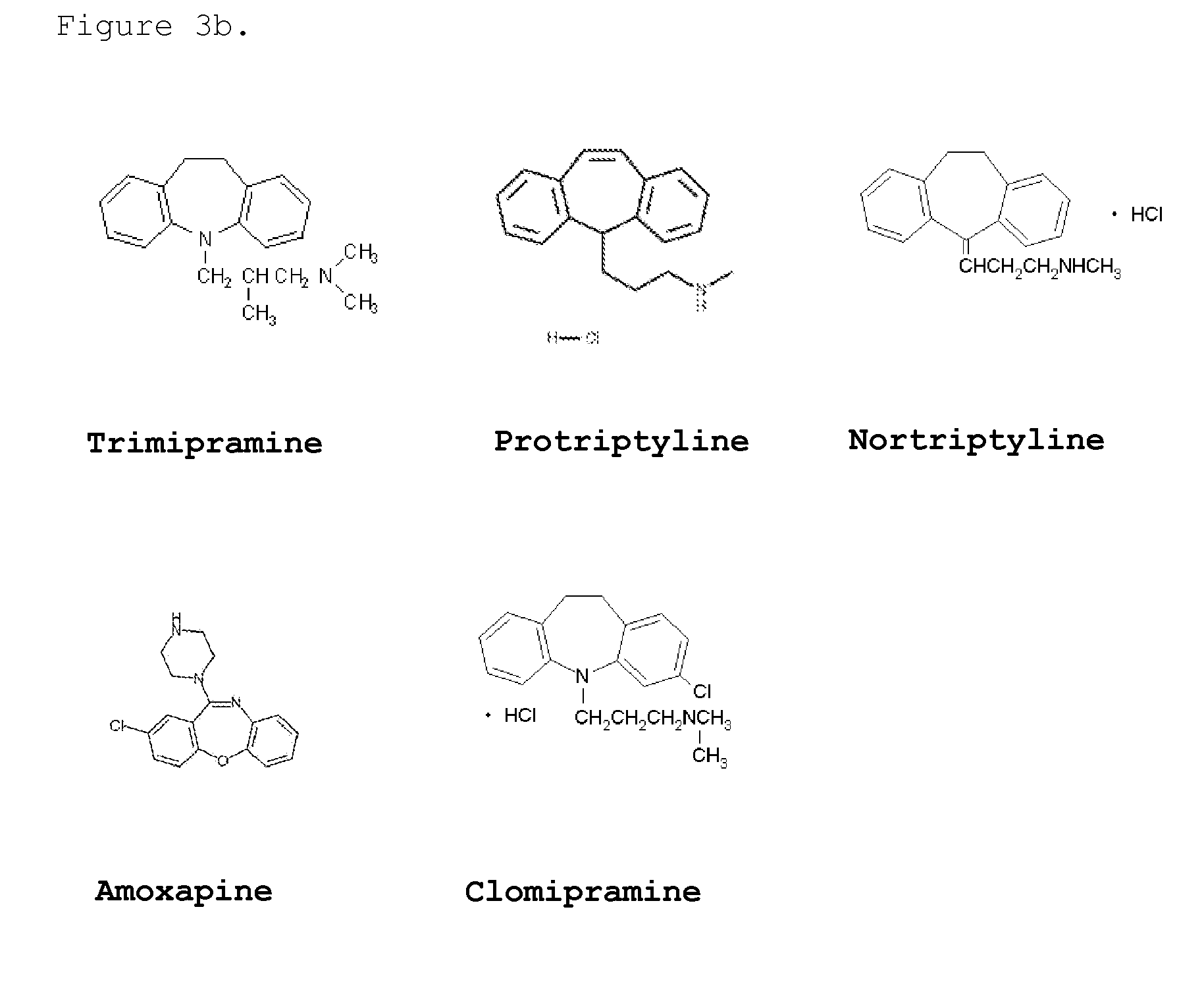Treatment of protein aggregation diseases
a protein aggregation and disease technology, applied in the field of protein aggregation diseases, can solve the problems of no good cellular model, no detectable therapeutic benefit, and progressive loss of memory and intellectual abilities
- Summary
- Abstract
- Description
- Claims
- Application Information
AI Technical Summary
Benefits of technology
Problems solved by technology
Method used
Image
Examples
example 2
Use of the Seprion Assay as a Rapid Screen for Compounds that Affect the Amyloid Aggregation Process
Background
[0093]Example 1 above demonstrates that the Seprion assay can be used to monitor the aggregation of beta-amyloid peptide. The assay was used to rapidly screen for compounds that could either interfere with or otherwise affect the aggregation process. Assays were preformed as described previously except that the amyloid peptide was incubated in the presence or absence of various test compounds.
Method
1. Synthetic beta-amyloid peptide was dissolved at 2.8 μg / ml in trifluoroethanol and either frozen immediately or allowed to self-aggregate for 30 min at 37° C. Other sets of reactions were prepared that contained the test compounds at 1 mM concentration.
2. At the end of this incubation reactions were diluted to reduce further aggregation and tested by the Seprion ligand assay.
Results
[0094]Over one hundred compounds were tested with most showing no effect on amyloid aggregation. T...
example 3
Determination of the Affect of Fluphenazine and Trimipramine on Amyloid Aggregation
Background
[0099]The signal generated in the Seprion assay is dependent upon the size of the aggregates and the accessibility of the aggregates to Seprion binding. Compounds that affect the aggregation could actually result in an increase in the Seprion signal compared to the aggregated control by generating smaller aggregates that have a higher effective molar concentration and / or are more accessible to the Seprion ligand binding. This effect could be achieved either through the breaking up of the very large aggregates to smaller aggregates or inhibition of the aggregation process so that the final aggregates themselves are smaller. Conversely, compounds that are very effective in preventing aggregation or in breaking down of the formed aggregates would lead to a much lower signal in the Seprion assay compared to the aggregated control. In this respect the effects of the two compounds. fluphenazine an...
example 4
In Vivo Testing of Drug Candidates in a Mouse Model
Background
[0106]A mouse model (hAPP(751)) that over-expresses the human beta amyloid protein with the London (717) and Swedish (670 / 671) mutations was used. These mice develop increased amounts of beta-amyloid 1-40 and 1-42 in the brain and develop amyloid plaques in the brain at the age of 4-6 months.
Method
[0107]Four groups of recombinant (hAPP(751)) mice were used and were treated as described below:
Group A. Control group. Daily, orally treated with saline.
Group B. Daily, orally treated with fluphenazine (0.5 mg / Kg body weight).
Group C. Daily, orally treated with trimipramine (25 mg / Kg body weight).
Group D. Daily, orally treated with both fluphenazine (0.5 mg / Kg body weight).
and trimipramine (25 mg / Kg body weight).
[0108]Treatment was started at 2 months of age and continued to 6 months of age when the mice were sacrificed and examined. The mice brains were cut in half. One half was studied by immunohistochemistry for amyloid aggre...
PUM
| Property | Measurement | Unit |
|---|---|---|
| pH | aaaaa | aaaaa |
| body weight | aaaaa | aaaaa |
| body weight | aaaaa | aaaaa |
Abstract
Description
Claims
Application Information
 Login to View More
Login to View More - R&D
- Intellectual Property
- Life Sciences
- Materials
- Tech Scout
- Unparalleled Data Quality
- Higher Quality Content
- 60% Fewer Hallucinations
Browse by: Latest US Patents, China's latest patents, Technical Efficacy Thesaurus, Application Domain, Technology Topic, Popular Technical Reports.
© 2025 PatSnap. All rights reserved.Legal|Privacy policy|Modern Slavery Act Transparency Statement|Sitemap|About US| Contact US: help@patsnap.com



